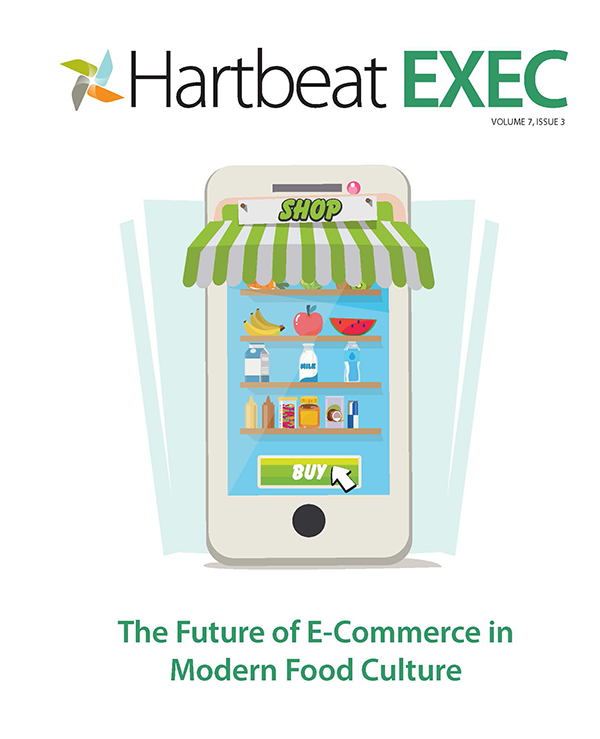Are We Beginning to Look Like Europe? The Digital Transformation of America’s Shopping Behaviors
![]() We’re all familiar with the story: online shopping and spending continues to grow by leaps and bounds. Never mind that the online portion of grocery sales is relatively small compared to the overall grocery retailing market. Today, sales of groceries through online platforms represent the fastest-growing food retailing segment.
We’re all familiar with the story: online shopping and spending continues to grow by leaps and bounds. Never mind that the online portion of grocery sales is relatively small compared to the overall grocery retailing market. Today, sales of groceries through online platforms represent the fastest-growing food retailing segment.
And to think that less than twenty years ago, industry analysts pooh-poohed this nascent retailing channel, largely due to the demise of pioneer online retailers Webvan and HomeGrocer. Consumers never seemed to let go of the idea, in part because of their increasing immersion in all things internet and digital.
While it has yet to detract from the number of in-person visits, online grocery shopping has seen significant gains recently as well as a huge expansion of options for consumers. Its main benefit is satisfying a key need: convenience. Its biggest barrier, however, is emotional, in that many people actually enjoy grocery shopping in-person. This fast-moving and changing channel has the potential to make huge waves in the overall grocery shopping landscape, especially by stealing trips that are necessary but not enjoyable.
Who is today’s online food shopper?
Past-30-Day Grocery-Shopper Profile
According to our Food Shopping in America 2017 report, among regular online food shoppers:
- 83% are Millennials or Gen X
- 42% have $80K HH income or higher
- They skew significantly Asian and Hispanic (though Caucasians remain dominant)
- 50% live in 3+ person HHs, the ideal CPG target household (though most of these are not nuclear families)
- 41% of these shoppers live in HHs with children, significantly more likely to have children than the average U.S. HH
- They make more monthly trips for groceries than Gen Pop shoppers (16 vs. 12.2)
- … and more weekly trips for groceries than Gen Pop shoppers (2.4 vs. 1.9)
 Roughly 25% also have used online meal kit subscription services in the past month, significantly more than the Gen Pop participation rate (18%)
Roughly 25% also have used online meal kit subscription services in the past month, significantly more than the Gen Pop participation rate (18%)
Past-30-day online grocery shoppers appear to simply shop more often, but this doesn’t necessarily mean they spend more per week than the average shopper.
But there is more to it than this. We believe that online is facilitating a fragmentation of the weekly grocery volumes into smaller time increments and purchase events. This, in turn, implies a restructuring of what grocery shopping is and how it fits into ordinary life.
Why does this matter?
Because, when shoppers start shopping three times a week for groceries, they can:
- plan less
- buy more super-perishable items that otherwise might be skipped because “they won’t last”
- adapt better to changing social conditions midweek (# of dinners they’ll be at home for, how much out-of-home eating they’ll likely do, etc.)
- eat fresher produce and meat due to shorter time between purchase and usage
Rather than eating what they shopped, they are learning a more European style of living … they are shopping to eat … it’s a simple but revolutionary reframing of food procurement for the average American.
The difference is subtle but important. The question is: where in this shift is online procurement playing an enabling role? The data above suggest that a significant number of past-30-day online grocery shoppers are buying items needed for upcoming meals.
Based on our findings, we believe that rather than eating meal ingredients they shopped for, consumers shop for meals to eat … on a narrower time window than ever before.
Purchasing online for home-delivered, fresh meal ingredients may be a subtle, unconscious desire to collapse the time gap between meal selection and consumption. It transfers the meal-selection process to foraging online for meals to be eaten same day or next day rather than rummaging through the fridge to “cobble something together” based on purchases days and days earlier that may now be moot.
It will be interesting to see how the spate of mergers and acquisitions within this space will impact consumers and retailers alike. All eyes have been on Amazon’s acquisition of Whole Foods Market. But there is so much more to come. Stay tuned to this space.
To learn more about online grocery shopping: The Future of E-Commerce in Modern Food Culture
Report: Food Shopping in America 2017
